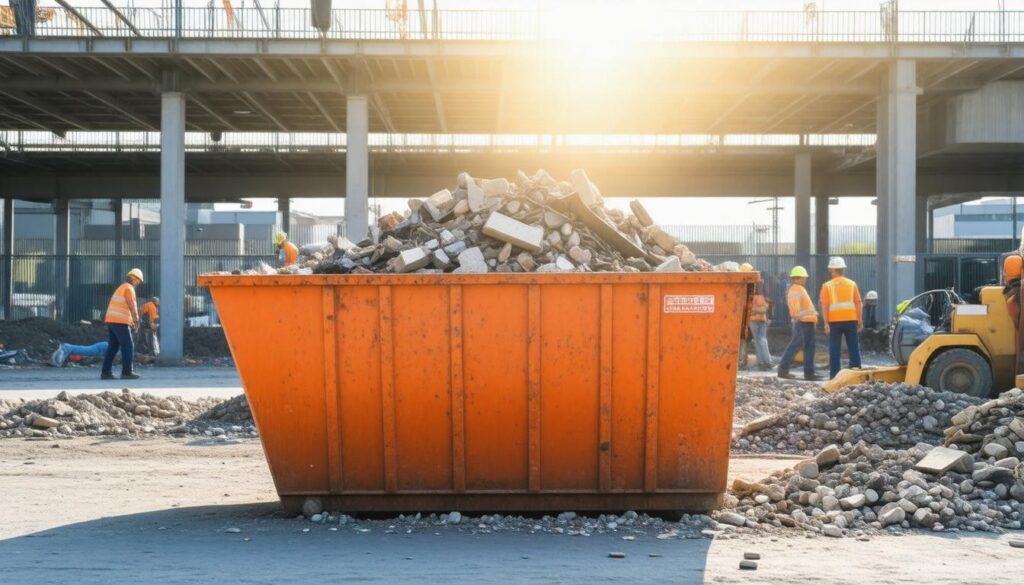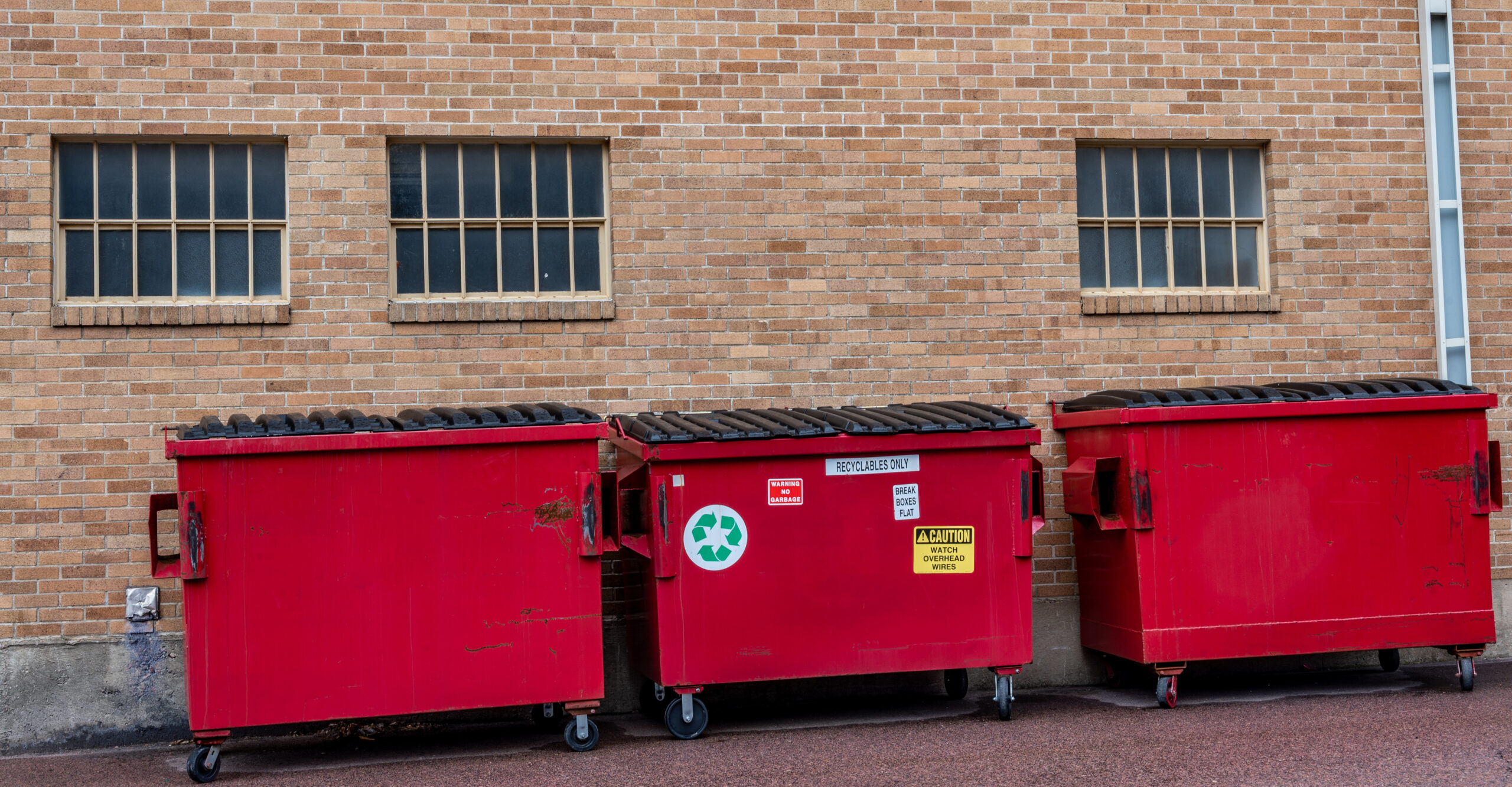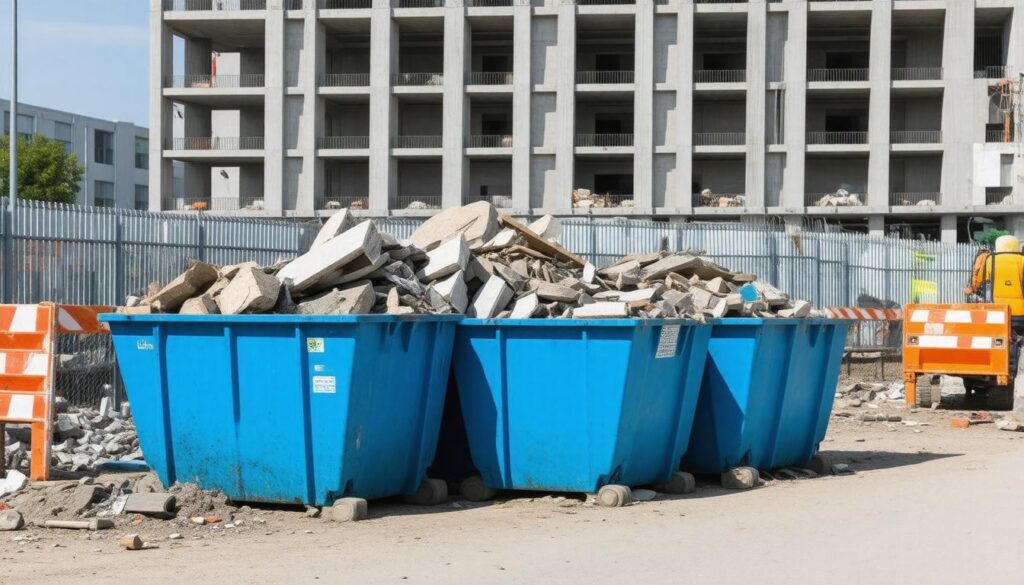When it comes to tackling large clean-up projects, whether it’s a renovation, construction site, or even a big spring cleaning at home, roll-off trash containers can be a game changer. Think of them as your trusty sidekick for managing waste—offering convenience, saving time, and keeping your space organized. It might seem overwhelming to choose the right size and type for your needs, but understanding the basics can simplify the process significantly. After all, nobody wants to deal with overflowing garbage or multiple trips to the dump! So let’s dive into the world of roll-off containers, exploring their sizes, types, and how they can help make your waste management easier than ever.
Roll-off trash containers are large, dumpster-style bins used for disposing of substantial amounts of waste during construction projects, renovations, or large clean-outs. You can easily rent one from local waste management services such as Tiger Sanitation, which offers various sizes to fit your specific needs.
Types of Roll Off Trash Containers
When it comes to roll-off containers, each variant caters to specific needs and scenarios. Understanding these different types can help you decide what fits your project best. One of the most prevalent types is the open-top container, a versatile choice frequently used in construction or renovation projects. These containers typically come in sizes ranging from 10 to 40 yards, making them appropriate for anything from light home cleanouts to large-scale demolition work.
Their open design allows you to easily load waste directly into the container, a feature preferred during bustling projects where time and access are important.
However, if left exposed outdoors, open-top containers may require covers to prevent debris from scattering or being blown away by wind. A simple tarp can do wonders to keep things tidy while maintaining compliance with local regulations regarding waste disposal.
Next, we have roll-off compactors, ideal for businesses dealing with significant volumes of recyclable materials or general waste. These containers operate by compressing the contents, which minimizes waste volume while simultaneously reducing pickup frequency. This not only leads to potential cost savings over time but also aligns well with sustainability efforts. If you’re running a business focused on environmentally friendly practices, choosing compactors could significantly decrease your carbon footprint by reducing transport emissions through fewer trips.
Fast forward to more specialized applications, and you’ll find sealed containers. These units shine in scenarios where hazardous or liquid waste is involved—think of construction sites dealing with chemicals or medical facilities disposing of biohazardous materials. Sealed containers ensure that no leaks occur, thereby protecting surrounding environments and aligning with regulatory guidelines. Using these types highlights a company’s commitment to safety and environmental responsibility.
Remember, however, that these sealed options may require specific handling and equipment for both delivery and pickup, so they’re best suited for businesses structured to manage those requirements effectively.
With a clearer understanding of the various roll-off container types, your choices can be more strategic as you consider both size and capacity needs for effective waste management practices.
Size and Capacity Options
When it comes to roll-off trash containers, recognizing the dimensions is just as critical as knowing their volume. Each size carries specific capacities designed to handle different types of waste, optimizing your disposal process.
For example, a standard 10-yard container measures approximately 12 feet long and 8 feet wide, making it the go-to choice for small cleanouts or simple garage decluttering sessions. Even though it’s compact, this size is surprisingly spacious when dealing with light materials like yard debris or old clothes.
As you scale up to a 20-yard container, you’ll notice an increase not only in length but also in versatility. This larger option, typically 22 feet long and 8 feet wide, is popular among families undergoing medium-sized renovations, especially if you’re setting out to dispose of bulky items like old furniture or appliances. It’s particularly effective for spring cleaning projects or when clearing out a basement before a remodel.
Continuing up the scale, a 30-yard container brings forth a significant jump in spatial capacity—often utilized for larger-scale DIY home renovations or significant demolitions. Measuring about 22 feet long as well but with increased height, it accommodates heavier waste more comfortably without sacrificing efficiency. Imagine tearing out an entire kitchen; that’s where this container shines, providing ample room for cabinets, countertops, and fixtures until you can sort through what can be salvaged versus what needs disposal.
Lastly, let’s not overlook the commanding presence of the 40-yard container, often found at major construction sites or large commercial operations. At nearly twice the length of those smaller options and suitable for hefty waste loads—such as concrete and structural materials—it becomes indispensable during extensive building projects. Its size – typically around 22 feet by 8 feet – means you can toss in larger items without worrying about overfilling excessively.
While these measurements provide a good frame of reference, it’s essential to match the chosen container with your project’s waste output effectively. Ordering a larger container than needed may incur unnecessary costs while risking the frustration of overflow if one that’s too small is selected.
This leads us to consider how each size’s appropriate fit not only facilitates better organization on-site but can also lead to cost savings—something everyone can appreciate during extensive projects. With that in mind, let’s explore how these different options cater specifically to various tasks at hand.
Advantages for Different Projects

Roll-off trash containers serve as an invaluable asset across various projects. Their distinct benefits cater to the unique demands of construction sites, home renovations, or yard clearouts.
For instance, construction sites thrive on organization and efficiency. When project managers utilize roll-off containers, they significantly enhance waste management processes. By designating a specific container for debris, they keep the site clutter-free, leading to safer working conditions. This adherence to safety not only earns them good standing with regulatory bodies but also protects workers from potential hazards associated with scattered materials.
A local contractor’s experience exemplifies this: “Switching to roll-off containers cut our waste management time by 30%, making our operations smoother and more efficient.” This speaks volumes about how proper waste disposal translates into increased productivity.
But the benefits extend far beyond construction; let’s talk about residential cleanouts.
For homeowners undergoing extensive renovations or seasonal cleanouts, roll-off containers provide a simple solution to large-scale waste removal. These containers save valuable time and effort that would otherwise be spent making multiple trips to a local dump or recycling facility. The process becomes streamlined: instead of worrying about where to put old furniture or broken appliances, homeowners can toss everything into the designated container without further thought.
Additionally, during yard clean-up projects, roll-off containers accommodate organic materials like branches and leaves in one convenient location. Homeowners appreciate this feature since disposing of these items separately can take days of cumbersome work. With everything disposed of properly in one go, their yards regain their beauty without breaking a sweat.
The convenience of having a roll-off container at your disposal not only enhances efficiency but encourages responsible disposal practices. No longer do people need to grapple with overflow bins or waiting in line at disposal sites; they create an environment conducive to tidying up effortlessly.
Moving forward, it’s crucial to choose a rental process that meets your specific requirements—taking into account factors like location, size options, and pickup schedules.
Convenient Rental Process

Renting a roll-off container is often viewed as a hassle, but with the right steps, it can be simple and efficient. First and foremost, you need to determine your needs effectively. Knowing the size of the container required for your specific project is crucial. Roll-off containers come in various sizes, typically ranging from 10 to 40 cubic yards. For smaller cleanouts or yard projects, a 10 or 20-yard container might suffice. However, if you’re tackling a larger renovation or construction project, opting for a 30 or 40-yard container will help ensure you have ample space for your debris without needing multiple pickups.
After assessing what size fits best for your cleanup, finding a reliable provider is next on your checklist. It’s important to research local service providers with solid reputations. Look for companies like Tiger Sanitation who are known for their integrity and customer-focused services. Reviews from other customers can be a treasure trove of information, revealing insights into reliability, customer service, and overall satisfaction.
“Finding the right provider can make all the difference!”
Once you’ve selected a company that suits your needs, coordinating delivery and pickup is essential.
Scheduling both the delivery and timely pickup of your dumpster follows. When booking, consider when you’ll need the container most—if you’re starting a project over the weekend, you’d want it delivered on Friday to avoid any delays. Additionally, scheduling an early pickup ensures that your work area remains clear of clutter, allowing you to focus on getting the job done efficiently. Open communication with your provider about your schedule will pave the way for timely service.
Easy Steps for Renting
Step I – Determine Size Needs: Assess your project to select the right container size, as mentioned earlier.
Step II – Find a Reliable Provider: Look for companies with good reviews such as Tiger Sanitation that offer reasonable prices without compromising quality.
Step III – Schedule Delivery and Pickup: Coordinate with the provider to arrange delivery specifically when you need it and schedule prompt pickups afterward.
Using online booking options available through many waste management companies enhances convenience. Online forms allow you to bypass potential wait times on phone calls while giving you flexibility in scheduling services that work best for you.
Understanding each part of this rental process enables effective planning and execution while minimizing potential wait times or miscommunication pitfalls along the way. This straightforward approach contributes not only to efficiency in your project but also peace of mind in handling waste responsibly.
As we continue ahead in navigating through waste management solutions, let’s explore various pricing structures and when it makes sense to hire professionals for optimal results.
Pricing and Hiring Options
When it comes to roll-off containers, pricing can vary significantly based on several crucial factors. It’s essential to understand what influences rental costs, which includes specifics of container size, rental duration, and location. Choosing the right option isn’t just about finding the best price; it’s also about ensuring that you’re getting a service that meets your needs effectively.
Influencing Factors
- Container Size: The size of the container is an immediate factor in determining costs. Larger containers are more expensive due to increased hauling and disposal fees. Imagine needing to dispose of an old sofa or an entire renovation’s worth of debris; a 20-yard container may come with a higher price tag but could save you from renting multiple smaller ones.
- Rental Duration: Consider how long you will need the container. Rentals that exceed the typical timeframe incur additional fees. Planning your project timeline efficiently can help you avoid unnecessary charges. Think about potential delays—those can add up quickly in rental fees!
- Location: Geographic considerations matter greatly. The distance from your location to the disposal site can impact fuel and transportation costs, which ultimately affect your rental price. Make sure to check where your nearest facility is located when planning.
For instance, if you’re looking at renting a 20-yard container for a week, you might find yourself anywhere from $300 to $500. This pricing isn’t arbitrary; it reflects local disposal fees and transportation costs specific to your area.
| Container Size | Estimated Cost Range |
|---|---|
| 10-yard | $200 – $400 |
| 20-yard | $300 – $500 |
| 30-yard | $400 – $600 |
| 40-yard | $500 – $700 |
While these estimates serve as guidelines, they reflect the unique characteristics of your project and environmental factors surrounding your waste disposal needs. Understanding this information enables you to budget accordingly and avoid overspending.
In addition to cost considerations, selecting a service that provides reliability while adhering to environmental standards is equally significant. This commitment not only fulfills your disposal needs efficiently but also emphasizes a responsible approach towards sustainability.
Environmental Considerations
The environmental impact of waste management is substantial, influencing everything from local ecosystems to global climate patterns. The good news is that by integrating eco-friendly practices, we can mitigate these effects considerably. By choosing a provider like Tiger Sanitation, you’re selecting a company committed to sustainable waste practices. They manage to recycle a significant percentage of the waste collected, positively impacting both landfill use and environmental health.
Sustainable Practices
One of the most crucial elements of maintaining sustainability in waste management is the rate of recycling. Engaging with companies that actively participate in recycling initiatives can greatly reduce our carbon footprint. Each recycling effort translates to fewer resources consumed to create new products, leading directly to a reduction in overall emissions. According to the EPA, effective waste management and recycling efforts can result in cuts in greenhouse gases equivalent to removing millions of cars from the roads annually. This statistic serves as a powerful reminder that every small action counts towards creating a cleaner, greener planet.
Furthermore, recycling conserves vital natural resources such as timber, water, and minerals. When paper products are recycled rather than produced anew, fewer trees need to be harvested, allowing protected forests to stand taller for future generations. Choosing providers who prioritize eco-friendly practices significantly contributes to preserving nature’s balance. It’s about more than just cleaning up after ourselves; it’s about nurturing an ongoing relationship with our environment.
Policy Compliance
Adhering to both local and federal regulations regarding waste disposal is essential—not just for legal compliance but also for community well-being. Companies that follow established policies minimize the risks associated with improper disposal methods and help avoid potential fines. More importantly, these providers support public health by reducing hazards such as pollution that can arise from irresponsible refuse treatment.
Integrating these compliance standards into your choice of waste management service promotes accountability and fairness in how we treat our environment, encouraging everyone involved to act responsibly.
By considering both sustainable practices and policy compliance when selecting a waste provider, you’ll make environmentally sound choices that benefit your project while contributing positively to global conservation efforts. For more detailed information on how you can act sustainably in your own community, feel free to visit our website at Tiger Sanitation.
Ultimately, prioritizing responsible waste management not only helps you meet your needs but also plays an essential role in protecting our planet for future generations. The impact of your choices can ripple through communities and ecosystems alike.




